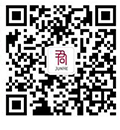The QDIE Pilot Program: The Latest Developments and Practice
2022.02.26 AN, Ming、JI, Xu
In January 2022, the State Administration of Foreign Exchange (“SAFE”) issued the Implementation of the Pilot Program for the High-Level Opening Up of Cross-border Trade and Investment, aiming to further facilitate cross-border investment and financing activities in certain regions. The QFLP (Qualified Foreign Limited Partnership) and QDLP (Qualified Domestic Limited Partner) were highlighted as two key pilot programs. Following this, the local bureaus of SAFE in the relevant regions issued the Detailed Implementation Rules for the Launching of Pilot Program for the Reform of Foreign Exchange Administration on High-Level Opening Up of Cross-border Trade and Investment as well as other relevant operational guidelines for the QFLP and QDLP pilot programs.
Shenzhen, as a pioneer of China’s reform and opening-up and a model city of innovation, has sponsored a unique QDIE pilot program (Qualified Domestic Investment Enterprise) that enables qualified domestic investors to invest in foreign markets within permitted quotas, garnering a lot of market attention. At the end of 2020, the total quota for the QDIE pilot program was raised to USD 10 billion. In April 2021, the Shenzhen Financial Regulatory Bureau amended the Administrative Measures of Shenzhen for the Implementation of the Pilot Program for Overseas Investment by Qualified Domestic Investors (“Shenzhen QDIE Measures”) to promote the implementation of the QDIE pilot program in an orderly manner and attract more investment in Shenzhen. It was reported that by the end of 2021, Shenzhen had approved a total of 69 QDIE management enterprises for pilot qualification, with a total amount of overseas investment of USD 1.99 billion.1
In the context of the latest development of the QDIE pilot program, we discuss below two of the major issues in practice concerning market participants.
I. Is ODI filing/approval with the Development and Reform Commission required for overseas investment through the QDIE pilot program?
When the QDIE pilot program was first implemented, some investors believed that there was no requirement to go through the Outward Direct Investment (“ODI”) filing/approval formalities with the Development and Reform Commission for overseas investment. However, on August 26, 2021, the National Development and Reform Commission (“NDRC”) released a Q&A on its official website, clarifying that if overseas investment activities conducted by an investor through the QDII (i.e. Qualified Domestic Institutional Investor), the QDLP, the QDIE, or other pilot programs fall into the scope of overseas investment activities as stipulated in Article 2 of the Administrative Measures for the Overseas Investment by Enterprises ( the “Decree No.11”) released by the NDRC, then the investor shall go through the relevant formalities for overseas investment in accordance with this Decree No.11. According to our recent verbal consultation with the Shenzhen Development and Reform Commission, Shenzhen is currently implementing the requirements as specified in the Q&A of the NDRC.
This may have significant implications on the business operations of QDIE management enterprises. On the one hand, ODI filing is time-consuming. It usually takes 1 to 2 months to complete the ODI filing in Shenzhen, which may adversely impact the efficiency of overseas investment through the QDIE pilot program. On the other hand, the permissible investment scope under the QDIE pilot program is relatively broad. The QDIE management enterprises are allowed to invest not only the equity interest of foreign non-listed companies and non-publicly traded shares of foreign listed companies, but also foreign debts and foreign funds. Taking foreign funds as an example, in accordance with the rules issued by the NDRC, establishing equity investment funds or investment platforms overseas without targeting specific industrial projects shall fall under the List of Sensitive Sectors for Overseas Investment (2018 Version) and therefore shall be subject to the approval of the NDRC. However, in practice the NDRC’s approval is difficult to obtain, which is a substantial obstacle for those who intend to invest in foreign funds through the QDIE pilot program.
II. Qualification Requirements and Pilot Quotas for the QDIE Pilot Program
Although the Shenzhen QDIE Measures do not specify the detailed conditions and application documents required to apply for the pilot qualification of QDIE management enterprises and the relevant pilot quota, it does not mean that the threshold for the QDIE pilot program has been lowered. Rather, based on our observations, the regulator may comprehensively review an applicant’s background and investment management experience to decide whether to grant a pilot qualification. According to our experience, when applying for the pilot qualification of the QDIE management enterprise, an applicant is required to submit items such as a report on the feasibility of the QDIE management enterprise, the qualification certificates of the QDIE management enterprise, and the capital verification reports of the QDIE management enterprise, its shareholders and its de facto controller (see Form I for the full list of application documents). When applying for the pilot quota for the QDIE pilot program, an applicant is required to submit, among other things, a report on the feasibility of the overseas investment vehicle (i.e., the QDIE fund) that is launched or proposed to be launched and a report on the feasibility of the proposed projects (see Form II for the full list of application documents).
With the improvement of the facilitation of QDLP pilot programs in other regions, we believe that Shenzhen will commit to promoting cross-border cooperation and innovation, against the backdrop of the liberalization of the Renminbi capital account, which is expected to bring greater vitality to the QDIE pilot program.
Form I Application Documents for the Pilot Qualification of QDIE Management Enterprise
No.
Documents
1
Application form for the QDIE management enterprise
2
Report on the feasibility of the QDIE management enterprise
3
CVs of senior management personnel (including the legal representatives, directors, supervisors etc.) of the QDIE management enterprise
4
Identification certificates (photocopied) of senior management personnel of the QDIE management enterprise
5
Qualification certificates of the QDIE management enterprise (English versions to be translated into Chinese and notarized by a third party.)
6
Capital verification reports of the QDIE management enterprise, its shareholders, and its de facto controller (English versions to be translated into Chinese and notarized by a third party.)
7
Certificate of enterprise name(which is required if the QDIE management enterprise is newly established.)
8
Articles of Association/Partnership Agreements
9
Commitment letter on the authenticity of the documents submitted
10
Certificate of no criminal record of senior management personnel
11
Other materials as required
Form II Application Documents for the Pilot Quota
No.
Documents
1
Basic information on the proposed/established overseas investment vehicles
2
Report on the feasibility of the proposed/established overseas investment vehicles
3
Report on the feasibility of the proposed projects
4
Approval documents of the QDIE management enterprise
5
Commitment letter issued by the QDIE management enterprise on fulfilling the obligations regarding investor suitability
6
Confirmation letter on the proposed fund custodian
7
Commitment letter on the authenticity of the documents submitted
8
Certificate of enterprise name (which is required if the QDIE fund is newly established in the form of a company or a limited partnership enterprise.)
9
CVs and certificates of no criminal record of senior management personnel/management team members
10
Other materials as required
1. Shenzhen Economic Daily: “69 QDIE management enterprises have been approved for pilot, with a total quota of USD 1.99 billion approved for overseas investment (http://duchuang.sznews.com/content/2022-02/10/content_24926082.html).











